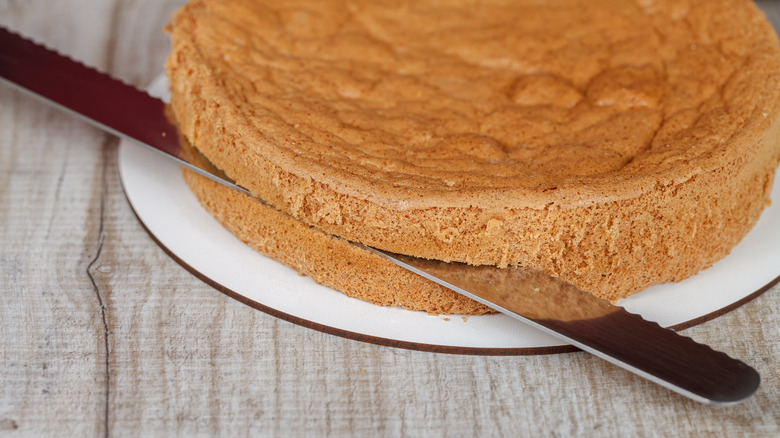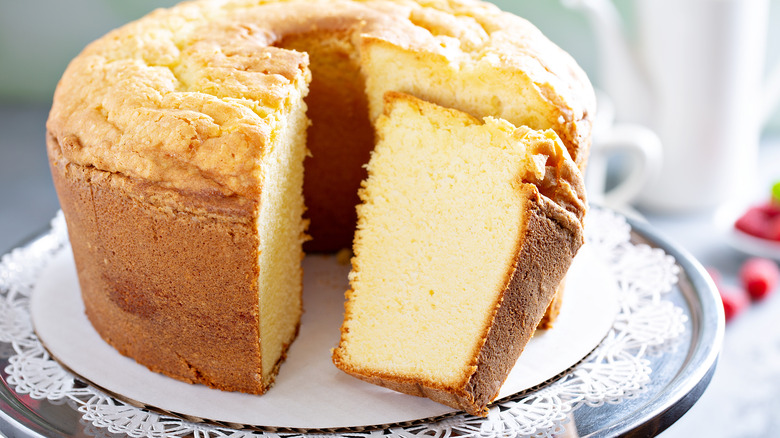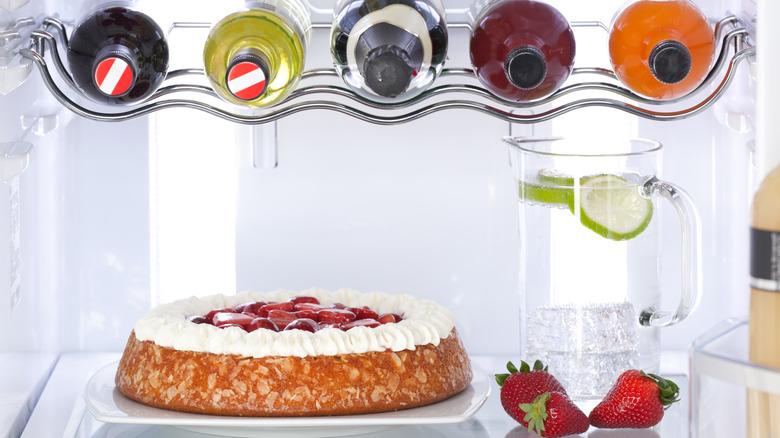Cut Your Cake Into Layers To Expedite The Cooling Process
We may receive a commission on purchases made from links.
Cooling a fresh-out-of-the-oven cake can take a couple of hours. And while that's not a hugely inconvenient amount of time, time is not something we always have plenty of. Sure, there are plenty of cake-baking hacks out there, but creating more time isn't one of them.
So if you find yourself with just a few hours to spare before that bake sale you agreed to bring a cake to, try cutting the cake into layers to expedite the cooling process. The rationale behind it is fairly straightforward: The more surface area a heated object has, the quicker it cools. Obviously, this works best if you're planning to make a layer cake. But even if that isn't your initial plan, you can still get creative — try covering the cuts with a coating of crumbs, frosting, or anything else that makes them less visible.
In any event, let your cake cool on its own before slicing into it with a serrated knife (about 20 minutes should do it). Then lay the layers out separately to cool on their own.
Surface area and cooling
The reasoning behind letting your cake cool before you start decorating is fairly commonsensical — a hot cake is more liable to fall apart than a completely cool one. Also, many toppings will melt if you put them on a warm cake. Most frostings will pretty much liquefy, leaking into the cake itself and creating a soggy, gloopy mess.
The surface area factor is one of the reasons that wire cake racks — those that are able to lift the cake off the counter and expose its underside to the open air — are so commonly used. They generally help your cake cool quickly and more evenly and are pretty much a necessity in any modern kitchen.
You won't always be able to apply this rule. The type of cake you're making will certainly play a role. Angel food cake, for example, cannot even be taken out of the pan before cooling. In this case, you need to flip the ungreased tube pan upside down and suspend it about the counter surface so that it can cool slowly and get that airy, pillowy texture. This is why the glass bottle — used to keep the upended tube pan hanging above the counter — is so often recommended. It's also why some tube pans come with feet on the side: to achieve the same thing without the bottle.
Should you put your cake in the fridge?
Then, of course, there's the refrigerator. The sense behind this is obvious: A cool place will drop the temperature of the cake faster, and few places in your home are cooler than the fridge. But when it comes to cooling your cake, using the fridge must be done carefully. According to MasterClass, the refrigerator can suck moisture out of your cake or cause it to deflate, ruining the texture. For that reason, the fridge should be used sparingly and only for short periods to cool your cake.
Meanwhile, the Betty Crocker website states that using the fridge to cool your cake is completely fine, but there are stipulations. One is that it can be popped in the refrigerator for 30 minutes, and only after the 2- to 3-hour room temperature cooling time. The other, interestingly enough, brings us back to the principle of creating more surface area, which includes slicing it into layers — but only after letting it cool outside the pan for at least 10 minutes. Regardless, the key is making sure to cut the cake only after it has cooled on the outside.


